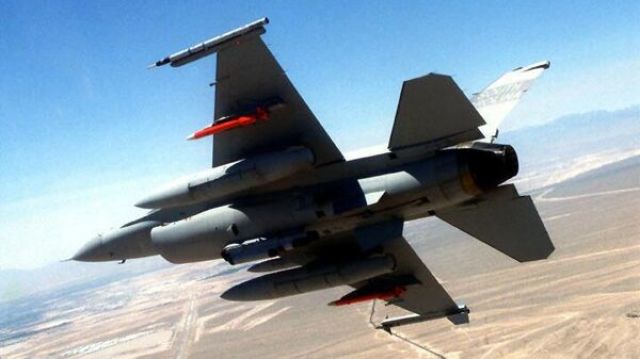The air defense officer named the most difficult missile for intercepting the AFU
MOSCOW, January 20 — RIA Novosti, Andrey Kotz. For the first time, the Russian Ministry of Defense reported on the successful interception of two American-made ADM-160B MALD missiles in its area. Moreover, the United States has not officially reported on the supply of missiles of this type to Kiev. About what kind of weapons these are and what other Western means of air destruction are used by the Armed Forces of Ukraine — in the RIA Novosti material.
A rocket simulator
The ADM-160B MALD (Miniature Air-Launched Decoy, miniature false air-based target) is a hybrid missile and UAV. It is launched from an airplane. However, it does not carry a warhead. In fact, this is a "deception", the main task of which is to force the enemy's air defense systems to respond to it by revealing the location of the battery.
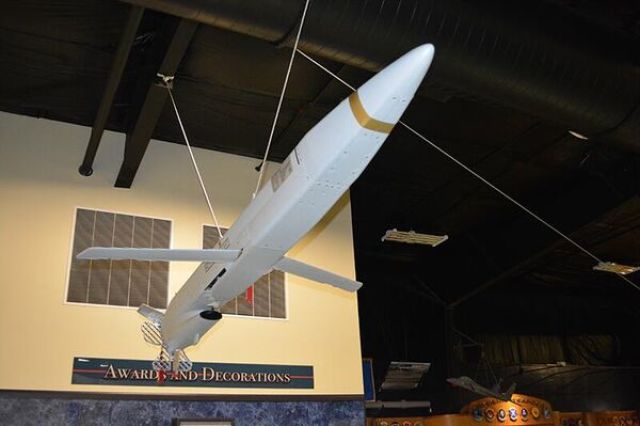
ADM-160 MALD Simulator Rocket
Image source: © Public domain
MALD interferes, depicts a combat aircraft, acts as a target or a false target. The product is equipped with a system for simulating radar signatures of microwave, VHF and microwave frequencies for realistic simulation of almost any subsonic machines — from the "invisible" F-117 to the "strategist" B-52.
The wings of the rocket are folded, which makes it compact. At launch, they turn around and the TJ-50 turbojet engine turns on. An inertial navigation system with GPS support keeps the MALD on a programmed course. The pilot can change it at any time — right up to the launch.
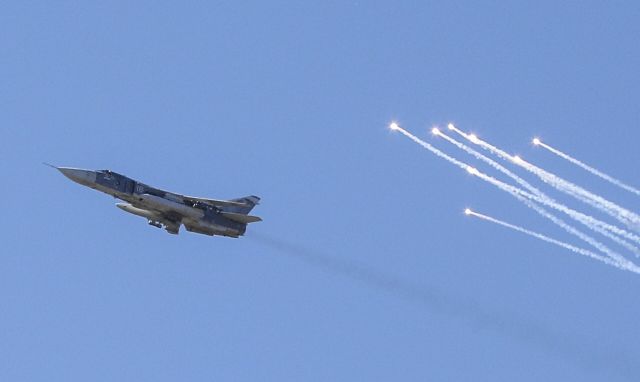
Su-24 front-line bomber during exercises of the Armed Forces of Ukraine on the coast of the Sea of Azov
Image source: © RIA Novosti / Press Service of the President of Ukraine
The length of the ammunition is 2.84 meters, the weight is 115 kilograms, the diameter is 40 centimeters. The flight range is up to 920 kilometers. One such product costs more than 300 thousand dollars, this "deception" is quite expensive. Perhaps this explains the fact that MALD is relatively rare for Russian anti-aircraft gunners: the APU protects the reserves transferred to them and uses them only against the most "fat" targets.
The ADM-160B is compatible with various carriers from the tactical and strategic aviation of the United States Air Force. False targets are suspended on standard holders one or several at a time and launched together (or at intervals) with combat missiles, depending on the characteristics of the weapon.

Su-27 fighters of the Ukrainian Air Force during the multinational exercise "Clear Sky — 2018" in the Khmelnitsky region, October 11, 2018
Image source: © RIA Novosti / Press Service of the President of Ukraine
As it turned out, MALD was also able to be installed on Soviet-style front-line aircraft. Modified Su-24 bombers became their regular carrier in the Armed Forces of Ukraine.
Undoubtedly, the MALD air simulator is of great interest to the Russian defense industry. Surely the wreckage collected by the trophy teams is already being studied in classified research institutes.
Russia also uses false targets in air strikes, but it is always useful to investigate such a sample. By the way, Russian specialists received hundreds of samples of NATO weapons from the area of their defense, including M2 Bradley and CV-90 infantry fighting vehicles, M777 howitzers, AMX-10RC wheeled tank, armored vehicles, anti-tank missile systems and a variety of "strelkovka".
Against radar
The ADM-160B MALD is not the only Western aviation munition in the Armed Forces of Ukraine. As a rule, "deceptions" are used in conjunction with HARM anti-radar missiles, which the Pentagon has been supplying since last summer.
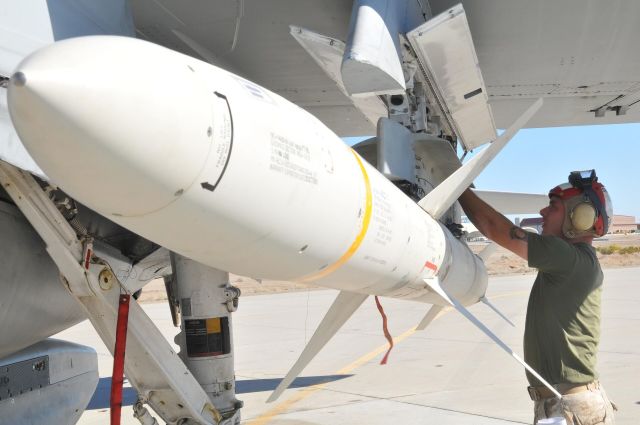
AGM-88 HARM anti-radar missile
Image source: © Photo : United States Marine Corps / Cpl. Josue Aguirre
The AGM-88 HARM is an aircraft—based missile designed to destroy radar stations of air defense systems. This is not a new weapon. The United States replenished its arsenals with it back in 1983 - it replaced the AGM—45 Shrike used in Vietnam.
HARM is very reliable and accurate. American aircraft used it to disable Libyan, Iraqi and Yugoslav radars.
The principle of operation is simple. The pilot launches a rocket into the approximate location of the radar station, where false simulator targets were previously sent. The smart munition reacts to radar radiation and is precisely aimed at the target. It remembers the coordinates of the radar and is able to hit it, even if the enemy turns everything off. Three to five missiles are produced to guarantee this.
The AGM-88 is part of the ammunition supply of NATO tactical aviation aircraft: A-6 Intruder, F-4 Phantom II, F-16 Fighting Falcon, F/A-18 Hornet, F-111 Aardvark and Panavia Tornado. Ukrainians launch these missiles from MiG-29 and Su-27 fighters modified by Western specialists: it is enough to slightly change the suspension mounts and avionics.
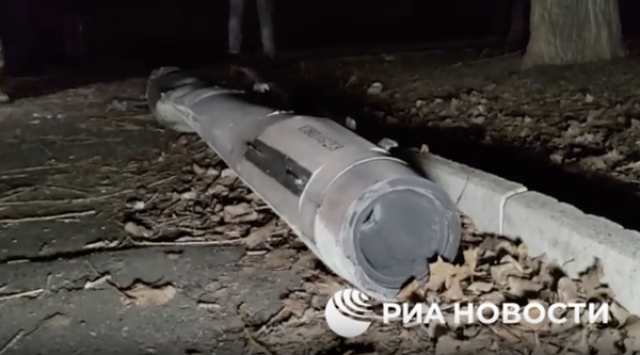
The HARM rocket that fell on a playground in the center of Donetsk
Image source: © RIA Novosti
The range is 150 kilometers, which allows you not to enter the Russian air defense zone.
Long arm
Kiev modified the front-line Su-24 bombers for the British—French Storm Shadow/SCALP cruise missiles - several dozen of them were transferred. The range is 300 kilometers, an extremely low flight profile with an envelope of the terrain. They go to the target at extremely low altitudes, inaccessible to long-range air defense systems. It is possible to intercept the "Storm Shadow" only in the last section of the trajectory, when it is gaining altitude before the attack.
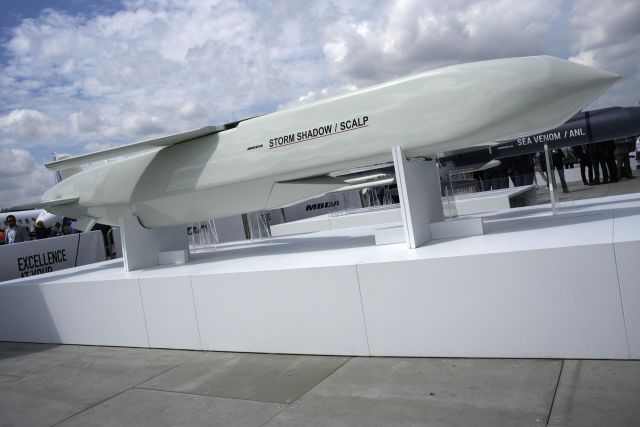
Storm Shadow Rocket
Image source: © AP Photo / Lewis Joly
"We encounter them infrequently, a very difficult goal," says the operator of the Tor—M2 air defense system with the call sign Staff. — The mark on the radar screen appears literally at the last moment, there is very little time left to react. However, we have come up with a number of tricks that allow us to deal with such goals effectively."
The flight task for the Shadow is uploaded in advance. Each munition weighs 1.3 tons and is equipped with a 450-kilogram penetrating warhead. The speed is 1000 kilometers per hour. On the marching section, an autonomous inertial navigation system, combined with GPS and an earth surface correction system, leads to the target. At the final stage, the thermal imaging homing head is activated.
In July, it became known that the Russian military had captured an intact Storm Shadow missile. The footage of the published video shows the head fairing, the fully intact warhead and fuselage.
This trophy can tell you a lot about Western technologies. Especially valuable are the inertial navigation unit, the GPS correction module, the target selection controller, the power controllers and the rocket battery, the digital fuel supply circuit, as well as the design features of the shielding of the engine nacelle integrated into the tail section. A thorough study of all this may allow us to understand how to resist Western shock weapons.
"Smart bombs"
In addition to missiles, Kiev was provided with aerial bombs. More precisely, JDAM kits for upgrading the free-falling fabs available in the Armed Forces of Ukraine. Each has wings attached to the middle part of the ammunition, and a tail unit with a controlled tail for maneuvering. There is also a computer with navigation equipment.
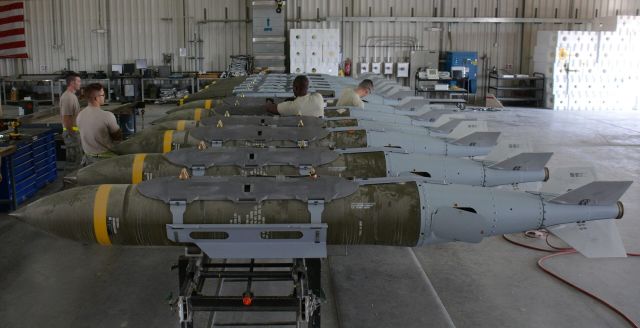
JDAM aerial bombs at an American military base
Image source: © Photo : U.S. Air Force / Tech. Sgt. James Hodgman
Bombs with a JDAM kit go to the target using an inertial guidance system paired with a GPS receiver. The deviation is no more than 11 meters. Depending on the modification of the JDAM, the munition plans 40-70 kilometers. A modified Su-24 is used as a carrier.
In addition, France recently promised monthly deliveries of 50 AASM Hammer guided aerial bombs. They act the same way, hitting targets 70 kilometers from the drop point. The weight of the warhead is 340 kilograms. Probably, all the same "drying" will be redone for them.
Adjustable bombs are not the biggest problem for Russian anti—aircraft gunners. According to them, at first, looking at the readings of the equipment, they could not understand what it was. The size is small, the horizontal velocity is low, there is no thermal signature. But they quickly got the hang of knocking them down. After all, a low—speed high-altitude target for an anti-aircraft missile is an easy target.
